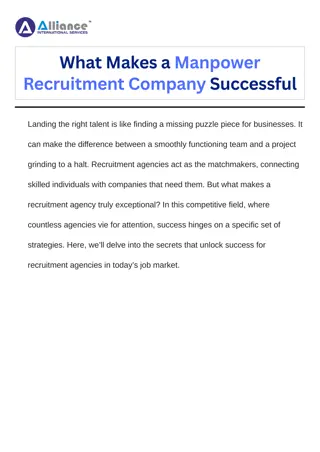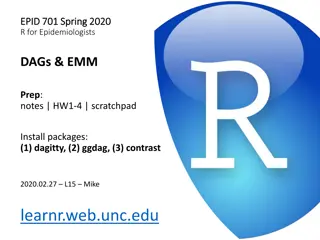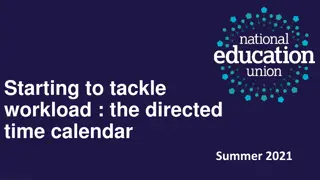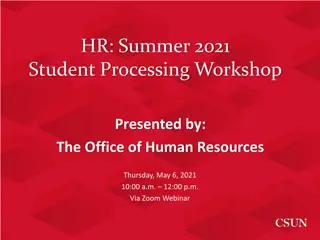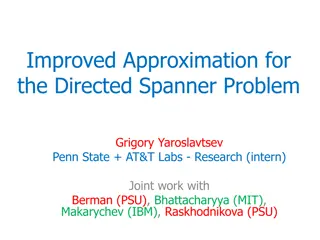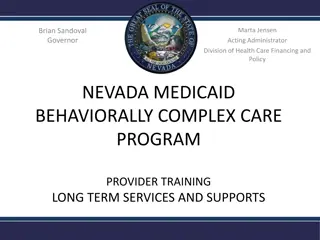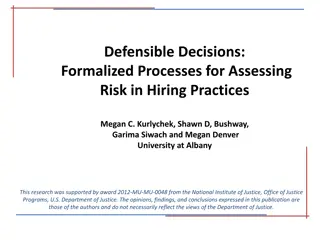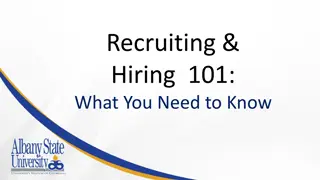Behaviorally Directed Hiring Process Overview
Behaviorally Directed Hiring Process is designed to predict future performance based on past behavior. Educators are often involved in the hiring process, but few are prepared to conduct it. The process involves developing the applicant pool, building a targeted candidate, screening candidates, and creating an interview matrix. Criteria for a successful candidate include subject area knowledge, communication skills, teamwork, and pedagogical abilities.
Download Presentation

Please find below an Image/Link to download the presentation.
The content on the website is provided AS IS for your information and personal use only. It may not be sold, licensed, or shared on other websites without obtaining consent from the author. Download presentation by click this link. If you encounter any issues during the download, it is possible that the publisher has removed the file from their server.
E N D
Presentation Transcript
Behaviorally Directed Hiring Process An Overview
Educator Preparation Information Educators are often placed in positions that require them to participate in the interview and or hiring process. Few Education Preparation Programs prepare educators to conduct the hiring process. Main Goal of the Process The interview and hiring process seeks to focus on predicting future performance base on past behavior.
Developing the Applicant Pool Sources for Applicant Selection : Behaviorally Directed Hiring 1. Referrals from University Placement Offices. 2. Recommendations from instructors in Departments/Schools within the universities or colleges from which the candidate graduated. 3. University/College Interview Fairs. 4. Recruitment Brochures 5. Personal Contact Made to Peer Groups in Educational Institution like your own.
Behaviorally Directed Hiring Process: Building a Targeted Candidate Create a Team to conduct the interview process 1. Individual holding similar Subject/Discipline positions and Department Chair/Administrator that will Supervise the new hire. 2. Review and update the job description. 3. Meet with Department and or Grade Level Team. 4. Develop queries and criteria based on the Qualification and Expectations setout below: a. Indiana Teaching License or Appropriate Credentials. a. Create a Skillset Profile: 1. Academic Preparation and Subject Area Mastery. 2. Consider the Quality of Pedagogical Experience (Employment History). 1. Student Teaching (2 years or Less Experience) a. Quality of Supervising Teacher and participating school, Academic Supervisor Institution, etc. 2. Regular Teaching Experience (3 or more years). a. Discipline Instructed b. Quality of Employment History b. Quality of Department Chair, Academic Institution, etc. 3. Special Recognition (Teacher of the Year, Published Articles, etc.) 5. Verify Application Information 1.
Behaviorally Directed Hiring Process: Building a Targeted Candidate Goals for the Screening Process 1. Screen Into the Interview Process. a. Key: Screening Out focuses on the negative. a. Base your hiring decision on the Totality of the Application. 2. Conduct a Preliminary Ranking of all Candidates. 3. Set a manageable number of candidates to Interview. a. Base the number of candidates to be interviewed on the quality of candidates not a set or predetemined number.
Behaviorally Directed Hiring I. Create an Interview Matrix II. Setout the Criteria (Examples Below) for a Successful Candidate and develop queries to investigate the candidates base on the criteria or Performance-Base Indicators (Below): 1. Knowledge of subject area. 2. Written Communication (Application) 3. Oral Communication 4. Examples of Team Participation 5. Listening Skills 6. Resourcefulness and Flexibility 7. Pedagogical Skillset 8. Organizational Skillset 9. Enthusiasm 10. Initiative 11. Appearance * It is helpful to assign a number and write comments to determine how well the candidate functioned on each Performance-Based Indicator. Remember: You are attempting to predict future performance based on past behavior.
Behaviorally Directed Queries Remember: You are interested in predicting how applicants will perform in the future based on how they have performed in the past. Questions should be experienced centered. You should avoid opinion responses. Questions should not elicit an opinion. Direct candidates to formulate an answer based on experience. Examples 1. Give an example of how you varied your instructional methodology because your initial approach feel short? 2. Give examples of how you utilized the art of the question in your instructional methodology? 3. Describe how you have participated in student activities outside the instructional setting?
Reference Check I. Confirm that all candidates understand that references must be contacted. II. Confirm that some references (to be checked) may not be on their list. III. Make every effort to have members of the team contact individuals that they know professionally. IV. Relate Reference Queries to the Successful Candidate queries. V. Questions must be focused to elicit response relating to the areas in the Matrix not on opinion of the reference. VI. Focus on responses to your questions. Do not let the reference take over the conversation.











